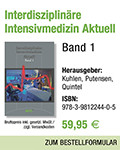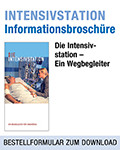Übersichten | Review Articles
Zertifizierte Fortbildung | Continuing Medical Education (CME)
Udo Kaisers, F. Hokema, D. Schreiter, S. Bercker
Intensivbehandlung nach Polytrauma
Critical care in multiple trauma patients
Schlüsselwörter
Polytrauma, Intensivbehandlung, Multiorganversagen, Transfusionstherapie
Keywords
Multiple Trauma, Critical Care, Multiple Organ Failure, Blood Component Transfusion
Zusammenfassung
Die Versorgung von polytraumatisierten Patienten stellt hohe Ansprüche an die interdisziplinäre Zusammenarbeit von Chirurgen, Anästhesisten, Intensivmedizinern und Radiologen; operative und konservative Behandlungsprozesse sowie diagnostische Maßnahmen müssen kontinuierlich miteinander verzahnt und aufeinander abgestimmt werden.
Eine ständige Evaluation der Patienten ist notwendig, um sekundäre Traumafolgen zu verhindern und um Komplikationen oder primär nicht diagnostizierte Verletzungen rechtzeitig zu erkennen. Die gesamte personelle, technische und bauliche Infrastruktur des versorgenden Krankenhauses muss an die komplexen Anforderungen angepasst sein, und es muss ausreichende Erfahrung in der Behandlung von traumatisierten Patienten vorliegen [1]. Die Behandlung sollte möglichst in spezialisierten Trauma-Zentren erfolgen, da dies nachweislich die Prognose verbessert [2]. Nach Abschluss der Versorgung in der akuten Phase kann im Rahmen von Trauma-Netzwerken eine Verlegung zur spezifischen Intensivtherapie aus dem Zentrum in ein nachgeordnetes Krankenhaus erfolgen [3].
Summary
A high level of interdisciplinary teamwork on the part of surgeons, anaesthesiologists, critical care physicians and radiologists is of the essence in the care of multiple trauma patients. Surgical and medical procedures and diagnostic measures require constant coordination and adjustment. Regular re-evaluation of the patients status is mandatory to detect possible secondary sequelae of the trauma, complications or initially undiagnosed injuries. The entire infrastructure of the care-providing hospital in terms of personnel, technical equipment and architectural aspects must be such as to meet the complex
requirements involved, and relevant competence in the treatment of traumatised patients is imperative. Treatment should therefore preferably take place in designated trauma centres as this verifiably improves mortality. Following initial management and stabilization a network of regional trauma centers can
enable timely transfer of patients to specialized
critical care facilities.












